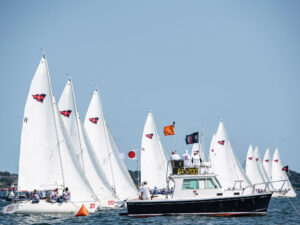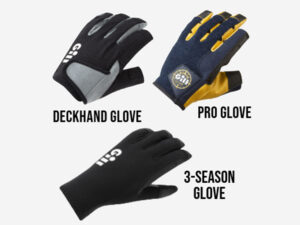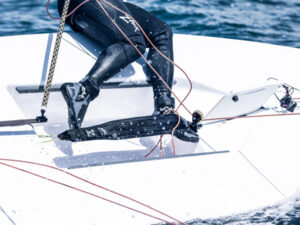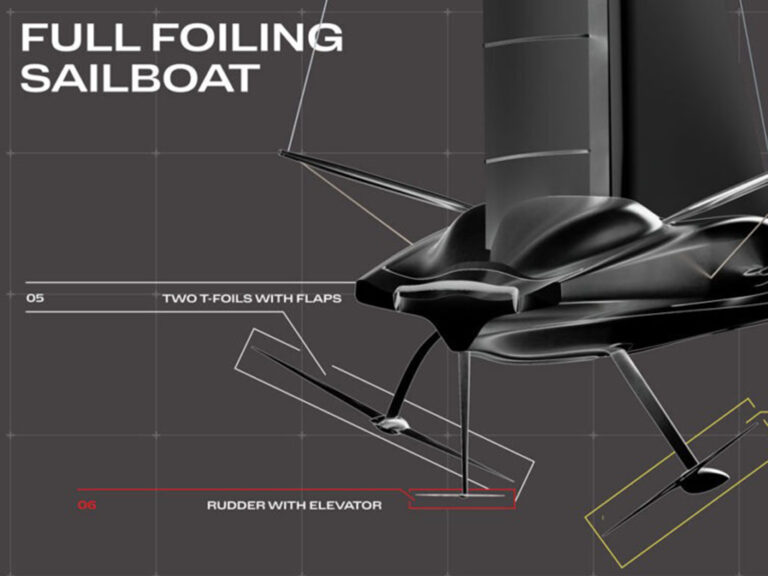
PaintTh
Research and real world feedback from competitive sailors confirms that the best bottom paint systems largely depend on geographic location. Differences in temperature, salinity, dissolved oxygen, and sunlight, as well as the length of the in-water season all impact bottom paint performance.
To better understand what worked best and where, we caucused speed shops and raceboat-favored boatyards around the country. Opinions varied, but a few points of consensus carried from one location to the next. One given was that a carefully faired keel and an epoxy primed and smoothly sanded bottom was the required starting point for all products. Another was that the higher the level of competition, the more often the bottom would be cleaned during the season.
From there, recommendations about the best bottom paint seemed to split down the middle with half favoring soft ablative coatings that hydrolyze, or slowly wear away to expose a fresh layer of slime-fighting chemicals. The other half favored hard, modified epoxy paint that can be scrubbed, wet sanded, and burnished to the point where the bottom looks like a polished beryllium sphere.
Shops servicing the needs of top-tier racers tended to favor the latter while those with predominantly club racer clientele felt the best bang for the buck came from high-biocide ablative coatings sprayed by a competent applicator.Paul Miller, a Naval Architecture Professor at the U.S. Naval Academy, who regularly tank tests slippery surfaces, recently reiterated that biological fouling starts within a couple of days of immersion, and even the first layer of bacteria can increase skin drag. He also pointed out that research has shown that a slippery coating does not in itself create less skin drag, but it does create a surface that marine plants and animals are less able to adhere to.
Developing a faster surface is about retaining laminar flow over more of the submerged hull skin, and shy of illegal practices, such as injecting polymers, detergents, and other chemicals into the water flow adjacent to the hull skin, smoothness and hull fairness are the variables worth improving. Paints, patents, and promisesBottom paints with chemicals defined as toxic to a wide range of marine organisms have been progressively removed from the market, and manufactures are developing effective ways to minimize biological growth.
In recent years, the definition of hazardous material has expanded to include Tributyltin (TBT)-a tin-based compound that is effective in bottom coatings. It remains legal for vessels longer than 82 feet, but its days are numbered. Soon it will join arsenic, mercury, and lead on the list of materials to be kept out of the water column. The importance of this development is crucial to competitors sailing to or shipping boats to Europe where tin has long been completely outlawed. Boats entering European waters must have a document detailing the coatings applied to their underbody-each layer, not just the last coat.Copper is now in the sights of regulatory researchers, and is already outlawed in some parts of Europe.
The result is new renditions of antifouling coatings must be made with less toxic or even non-toxic material. Making biocides that don’t end up in the environment is a priority as is further development of coatings that are too slick for organisms to attach to. Progress has been made, we have yet to surpass the performance of conventional top-of-the-line biocide-loaded paints, which are not as effective as tin-laced paints, and which have disappeared from U.S. and European chandlery shelves. Sailors are good stewards of the environment, but when it comes to bottom paint we’re still waiting for a “green” solution that can live up to the performance sailor’s needs.
The status quo is a multi-track approach-products with higher copper content still hold the antifouling edge. But, to racers there’s a second, highly valued characteristic of bottom paint-the ability to polish it to a smooth, slick surface. This is why ablative coatings that hydrolyze gained so much initial appeal. Their self-polishing chemistry releases biocide throughout the season, creating a near steady state antifouling quality. There’s also the upside of a smooth surface and an ability to haul and re-launch without destroying the antifouling quality of the paint. This triple set of advantages is further bolstered by zero paint buildup, as well as a surface that actually grows smoother with time. The problem was these claims were overly enthusiastic, and to really be ready for an important regatta, the bottom still needed to be wiped or scrubbed, a process that removed a significant amount of material, especially if done every couple of weeks.
Traditional hard, high-copper non-ablative bottom paints continue to have a strong following. They provide high initial antifouling quality and can be wet sanded to a smooth surface. In regions where the sailing season amounts to less than half of the year, and the normal routine includes regular bottom scrubs, these hard durable surfaces still make sense especially when the bottom is painstakingly wet sanded and burnished. Seasonal paint buildup is an inherent problem with hard coatings, and over a few years the skin can become cracked, chipped, or flaked.
Once this happens, it’s time for a labor-intensive bottom strip and paint makeover. Care must be taken during this process not to damage the fairness of the underlying surface.Slick, low-drag coatings are also on the market, and they deter fouling through the physical nature or lubricity of their skin rather than through copper content or other toxins. They’re effective in regions where fouling is less active, but they need to be carefully applied in order to develop as flawless a surface as possible. Some are soft and the surface may be wiped with a sponge but not scrubbed with an abrasive pad. A weekly wipe down by a swimmer with a sponge keeps the surface functional for the season, but if a month of inactivity slips by, barnacles may adhere to the surface and the show is over.
While regulations steadily eliminate biocides from antifouling coatings, other factors are conspiring to increase fouling rates. In some harbors it’s increased nutrients from farm run off or sewage treatment plants that boosts growth. Warmer water associated with global warming, and in some cases, better water quality are associated with the higher growth rates of organisms clinging to boat bottoms. The Mid-Atlantic has been plagued by an upturn in Bryazoan growth, a tenacious black mat-like coating that thrives in low-salinity conditions.
Barnacle growth in southern waters is booming. Ballast water dumped by globe-girdling freighters bring new organisms to local estuaries, and where conditions are right, they, too, find a new home on your boat’s keel, rudder, or hull skin. New products from companies such as E-Paint, which use zinc rather than tin or copper looking promising, but the best way to pick the right paint product for your racing commitment and local waters is to see what the industry experts use, check with others in your marina, and see for yourself which products are doing the best job.The CostPaint is the last thing to skimp on, and even budget-bound racers should invest in the best performing material for their part of the country.
The cost of a haul out, prep work, spray application, and diver service significantly exceeds the material cost of what’s in the can. Skimping on the quality or quantity of paint just doesn’t make sense. The big question is the level of finish desired, the cost of the management routine associated with bottom maintenance, and whether or not you bite the bullet and pay for the spray application of a hard finish product, the associated wet sanding, and also shoulder the cost of regular dive service that goes hand-in-hand with the top-tier competitor approach to bottom finish. Or, you opt for an ablative, self-polishing paint that requires no wet sanding, fewer bouts of bottom cleaning, and is perhaps less effective as a low-drag surface. Do-it-yourself prep work can help lower the application cost, but many yards mandate that they do all of the bottom work.Bottom Paint ResourcesAwlgrip: www.awlgrip.comE-Paint: www.epaint.netInterlux: www.interlux.comPettit: www.pettitpaint.comSea Hawk: www.seahawkpaints.com









